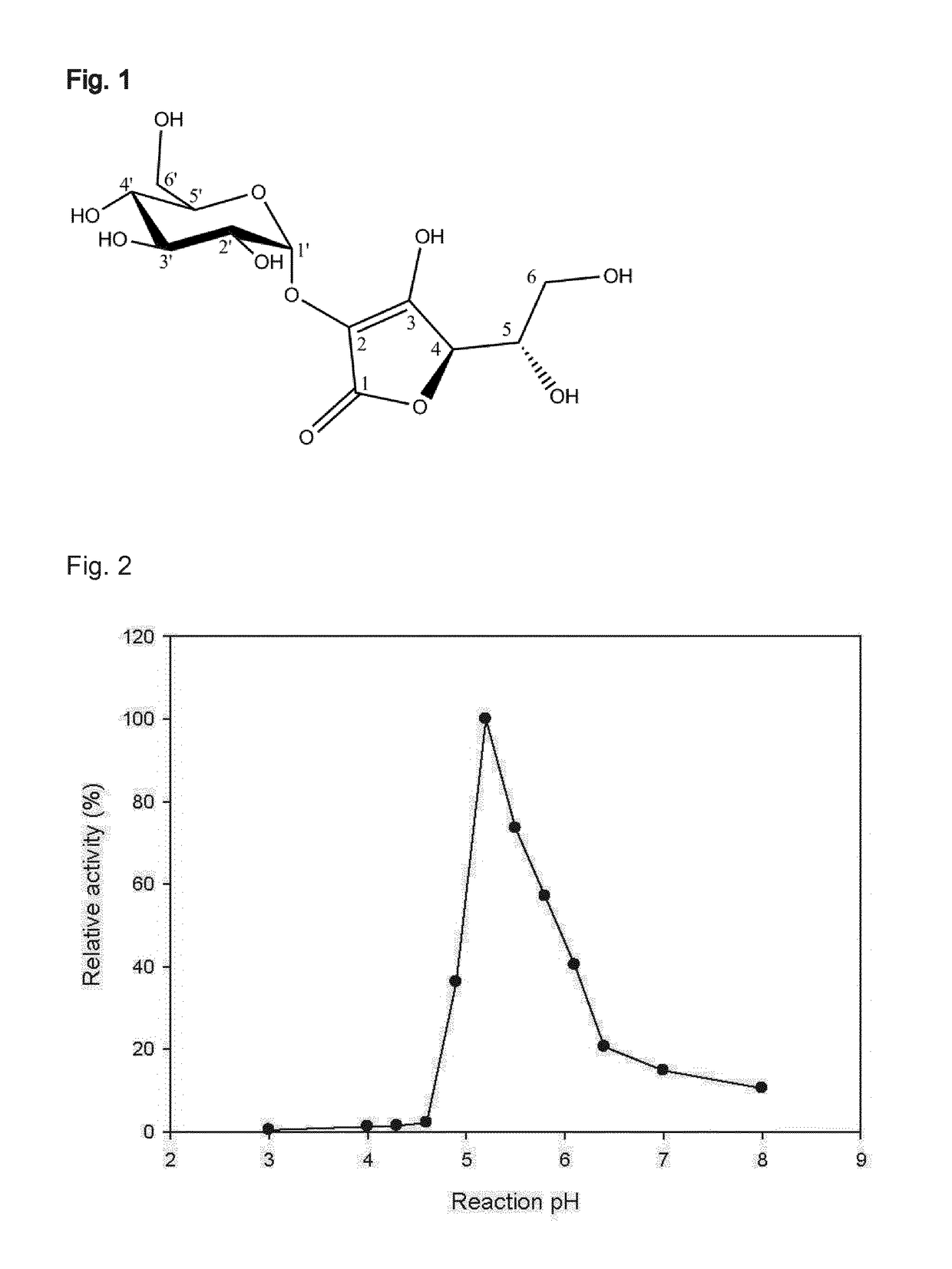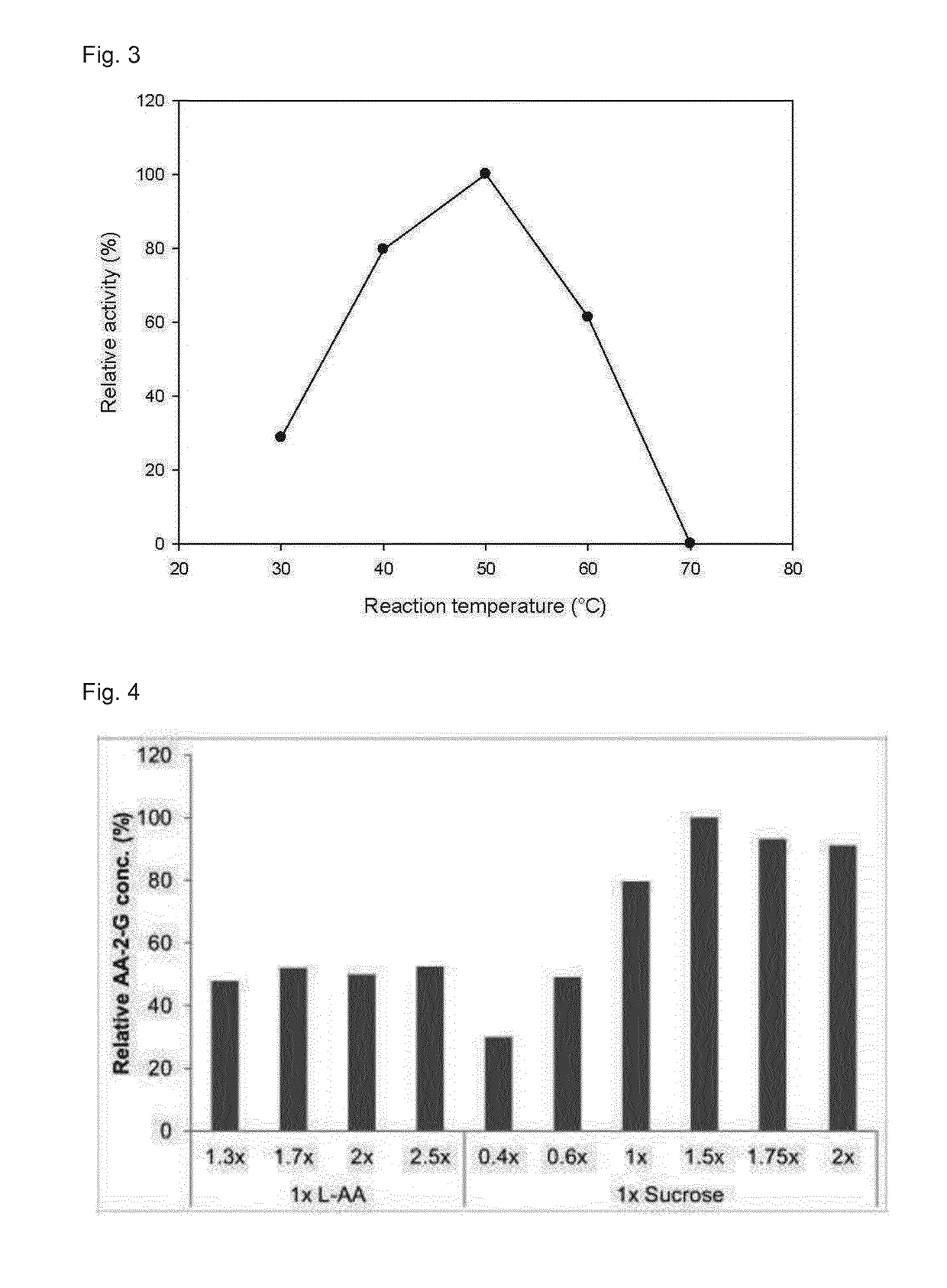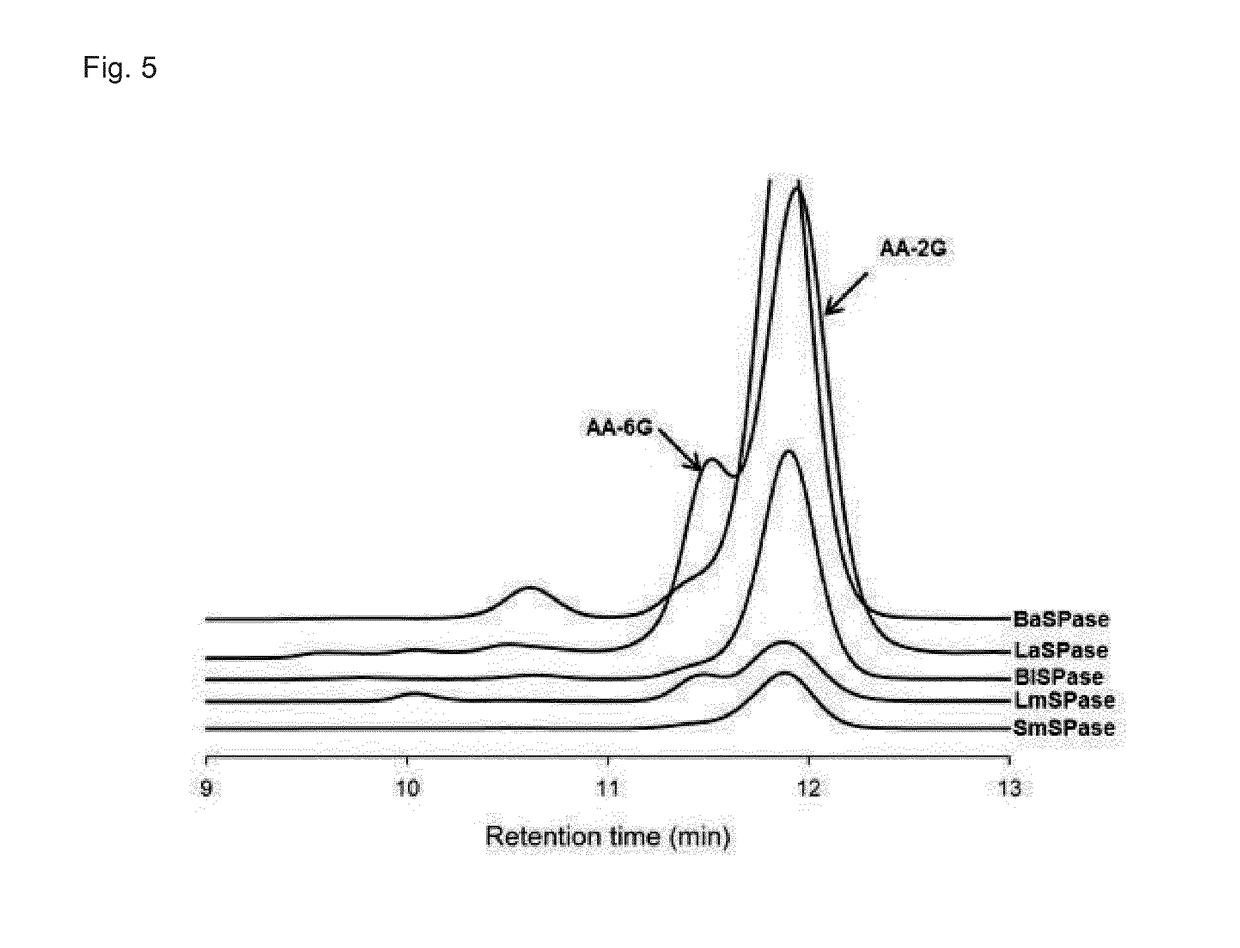Method for small molecule glycosylation
a glycosylation and small molecule technology, applied in the field of small molecule glycosylation, can solve the problems of difficult isolation, inability to cheaply obtain enzymes, and the introduction of isoforms,
- Summary
- Abstract
- Description
- Claims
- Application Information
AI Technical Summary
Benefits of technology
Problems solved by technology
Method used
Image
Examples
example 1
n of Sucrose Phosphorylase Enzyme
[0081]The E. coli BL21 host strain carrying pC21E vector with an insert of SPase gene under his-tag was used for the production of SPase. The gene was cloned under tact promoter system and was induced with IPTG. Little amount of culture from the glycerol stock was scratched with micropipette tip and inoculated into 50 mL of LB medium containing ampicillin (120 μg / mL). The flask was incubated at 30° C. overnight on shaker at 120 rpm for about 12 h. The overnight culture was inoculated into 200 mL LB medium containing ampicillin (120 μg / mL) to generate the OD600 of 0.01. The flask was incubated at 37° C., 120 rpm for several hours until the OD600 reach to 0.8 to 1.0. IPTG was added to the flask to make the final concentration of 1 mM. The flask was incubated on shaker at 25° C., 120 rpm for nearly 20 h. The cells were harvested by centrifugation at 5,000 rpm for 15 min. The supernatant was decanted and the pellet was washed with 100 mM citrate buffer p...
example 2
say
[0082]SPase activity was determined at 30° C. using a continuous coupled enzymatic assay, in which production of Glc 1-P from sucrose and inorganic phosphate is coupled to the reduction of NAD+ in the presence of phosphoglucomutase (PGM) and glucose 6-phosphate dehydrogenase (G6P-DH). The standard assay was performed essentially as described elsewhere in 50 mM potassium phosphate buffer, pH 7.0, containing 10 mM EDTA, 10 mM MgCl2 and 10 μM α-D glucose 1,6-bisphosphate. The reaction mixture contained 250 mM sucrose, 2.5 mM NAD+, 3 U / mL PGM, 3.4 U / mL NAD+-dependent G6P-DH and the enzyme solution in appropriate dilution. The formation of NADH with time was monitored spectrophotometrically at 340 nm. 1 Unit of SPase activity corresponds to the amount of enzyme that caused the reduction of 1 micromol of NAD+ per minute under the conditions described above. Protein concentrations were determined using the BioRad dye-binding method with bovine serum albumin as standard.
example 3
of 2-O-α-D-Glucopyranosyl-L-Ascorbic Acid
[0083]The reaction mixture, containing 1,200 mM of L-AA and 800 mM of sucrose or glucose-1-phosphate and 30 U / mL of SPase in water, was incubated at 50° C. and 300 rpm for 48 to 72 h. The reaction was performed preferably at pH 5.2 in air tight container under dark conditions. Product analysis was done using HPLC employing a BioRad HPX-87H column and the elution profile of the peaks were monitored with UV and RI detector. The column was maintained at 25° C. and 20 mM sulfuric acid was used as eluent at a flow rate of 0.4 mL / min. Under these conditions >30% of L-AA was glucosylated. The NMR analysis of isolated and purified product confirmed the α-1-2 glycosidic linkage of AA-2G.
PUM
| Property | Measurement | Unit |
|---|---|---|
| temperature | aaaaa | aaaaa |
| temperature | aaaaa | aaaaa |
| temperature | aaaaa | aaaaa |
Abstract
Description
Claims
Application Information
 Login to View More
Login to View More - R&D
- Intellectual Property
- Life Sciences
- Materials
- Tech Scout
- Unparalleled Data Quality
- Higher Quality Content
- 60% Fewer Hallucinations
Browse by: Latest US Patents, China's latest patents, Technical Efficacy Thesaurus, Application Domain, Technology Topic, Popular Technical Reports.
© 2025 PatSnap. All rights reserved.Legal|Privacy policy|Modern Slavery Act Transparency Statement|Sitemap|About US| Contact US: help@patsnap.com



